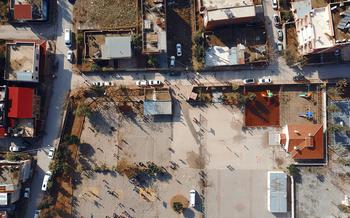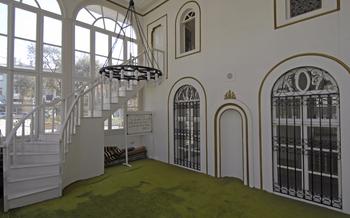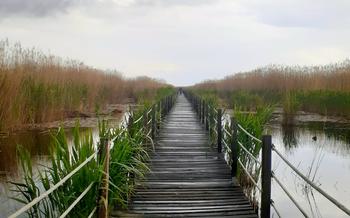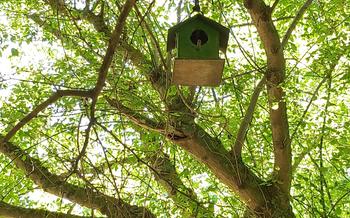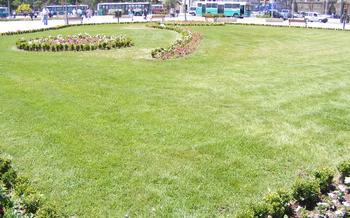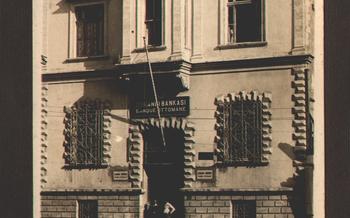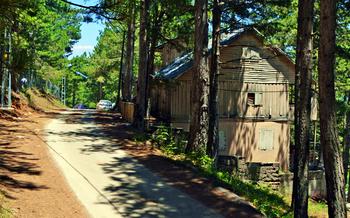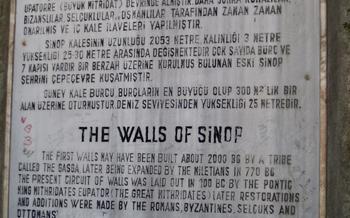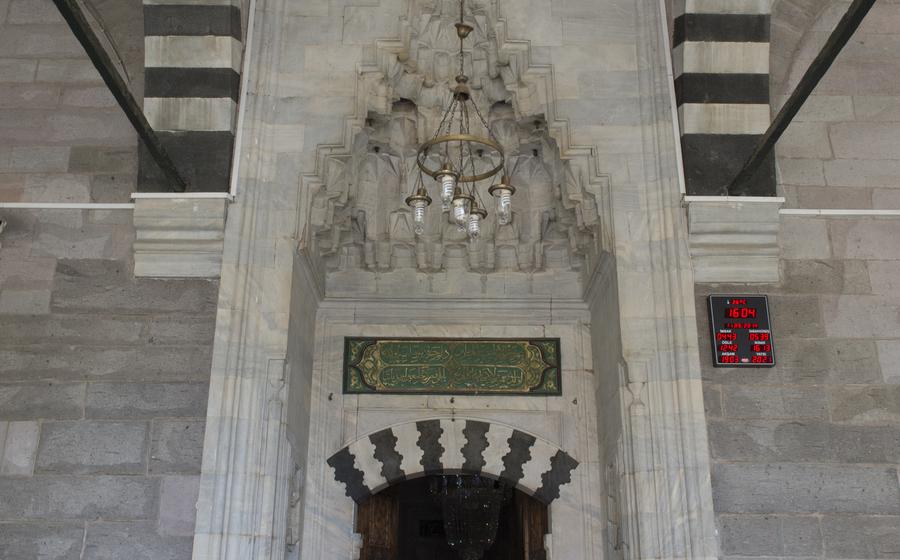
Kurşunlu Mosque
- Kurşunlu Mosque: An Architectural Masterpiece
- Explore the Prayer Hall
- Admire the Minaret
- Discover the History of the Mosque
- Take a Guided Tour
- Visit the Ablution Fountain
- Photography Opportunities
- Attend a Prayer Service
- Marvel at the Calligraphy
- Visit the Museum
- Learn about the Restoration Efforts
- Dress Code and Etiquette
- Enjoy the Serene Atmosphere
- Combine with Other Attractions
- Insider Tip: Unveiling the Secret Courtyard
Kurşunlu Mosque: An Architectural Masterpiece
The Kurşunlu Mosque, a magnificent architectural masterpiece, stands as a testament to the rich history and cultural heritage of Kayseri, Turkey. Built in the 16th century during the reign of Sultan Selim II, this awe-inspiring mosque showcases a unique blend of Islamic and Seljuk architectural styles. Its striking features, intricate decorations, and symbolic elements make it a must-visit destination for travelers seeking a glimpse into Turkey's architectural wonders.
The mosque's name, Kurşunlu, translates to "leaded," a reference to the lead-covered domes that adorn its rooftop. These domes, along with the mosque's towering minaret, dominate the Kayseri skyline, serving as a beacon of faith and devotion. The mosque's exterior is adorned with intricate tilework and calligraphy, showcasing the artistry and craftsmanship of its creators.
Beyond its captivating exterior, the Kurşunlu Mosque's interior is equally impressive. The spacious prayer hall, with its soaring columns and arched ceilings, exudes a sense of grandeur and spirituality. The mihrab, a niche indicating the direction of Mecca, is intricately carved and decorated, while the minbar, or pulpit, is a masterpiece of woodworking. The mosque's acoustics are remarkable, amplifying the imam's voice during prayers, creating a truly immersive worship experience.
Explore the Prayer Hall
The prayer hall of the Kurşunlu Mosque is a breathtaking space that showcases the mosque's architectural brilliance and spiritual significance. As you step inside, you'll be struck by the sheer size and grandeur of the hall, which can accommodate over 2,000 worshippers. Every inch of the prayer hall is adorned with intricate decorations, from the colorful tiles that line the walls to the elegant calligraphy that adorns the ceiling.
The mihrab, a niche in the wall that indicates the direction of Mecca, is a focal point of the prayer hall. It is intricately carved with intricate floral motifs and topped with a beautiful dome. The minbar, a raised platform from which the imam delivers sermons, is another notable feature of the prayer hall. It is made of carved wood and features intricate geometric designs.
The acoustics of the prayer hall are truly remarkable. The high ceiling and the smooth surfaces of the walls create a reverberant space that allows the voices of the worshippers to resonate throughout the hall. This creates a powerful and moving atmosphere during prayer services, as the voices of the worshippers blend together in a harmonious chant.
Admire the Minaret
The minaret of the Kurşunlu Mosque stands tall and proud, beckoning the faithful to prayer with its intricate tilework and calligraphy. Its height, a testament to the mosque's grandeur, dominates the skyline of Kayseri, visible from afar. The minaret's design, a harmonious blend of Seljuk and Ottoman architecture, features a cylindrical base transitioning into a slender shaft adorned with intricate tilework.
The tilework on the minaret is a masterpiece of Islamic art, featuring vibrant shades of blue, green, and turquoise arranged in geometric patterns. The tiles, meticulously crafted and arranged by skilled artisans, depict verses from the Quran and intricate floral motifs, adding a touch of elegance and spirituality to the minaret.
The calligraphy, another striking feature of the minaret, showcases the mastery of Islamic calligraphy. Verses from the Quran, written in elegant Arabic script, adorn the minaret's shaft, serving as a testament to the mosque's religious significance. The calligraphy, a symbol of devotion and faith, adds depth and meaning to the minaret's design, making it a true work of art.
The minarets of the Kurşunlu Mosque are not just architectural marvels; they are also symbols of the mosque's role as a center of worship and a beacon of faith. Their height and beauty serve as a reminder of the importance of prayer in Islamic culture and the spiritual connection between the mosque and the community.
Discover the History of the Mosque
The Kurşunlu Mosque, a testament to architectural brilliance, was conceived and constructed during the reign of the Seljuk Sultan, Gıyaseddin Keyhüsrev I. The mosque's foundation was laid in 1237, and under the watchful eye of its master architect, Muhittin bin Abdullah, the grand structure rose majestically over the years, finally reaching completion in 127This architectural masterpiece stands as a symbol of Kayseri's rich heritage, a testament to the skill and dedication of the masterminds behind its creation.
The construction of the mosque involved a diverse team of architects, artisans, and craftsmen, each contributing their expertise to bring this architectural marvel to life. The intricate details and harmonious blend of elements showcase their exceptional craftsmanship and artistic vision. The mosque's grandeur is a testament to their tireless efforts and devotion to creating a sacred space that would endure for centuries.
Throughout history, the Kurşunlu Mosque has played a pivotal role in the cultural and religious tapestry of Kayseri. Its imposing presence and serene atmosphere have made it a significant center of worship for the city's Muslim community. The mosque has also served as a venue for community gatherings, fostering a sense of unity and belonging among the faithful.
As you step within the mosque's hallowed halls, you cannot help but feel a sense of awe and reverence, transported back in time to the era of the Seljuk Sultanate. The Kurşunlu Mosque stands as a testament to the enduring legacy of the Seljuk dynasty, a symbol of their architectural prowess and unwavering faith. Its rich history adds depth and significance to this architectural masterpiece, making it a must-visit destination for anyone seeking to delve into the heart of Kayseri's cultural and spiritual heritage.
Take a Guided Tour
A guided tour of the Kurşunlu Mosque is an enriching experience that provides visitors with a deeper understanding of its history, architecture, and significance. Knowledgeable guides share fascinating insights into the construction, design, and symbolism of the mosque. They explain the cultural and religious context in which it was built, shedding light on its role in the community throughout the centuries.
Guided tours typically cover the prayer hall, minaret, ablution fountain, and other notable features of the mosque. Visitors can learn about the symbolic meaning of the mihrab, the intricate tilework and calligraphy adorning the interior, and the acoustics of the prayer hall that enhance the worship experience. Guides also provide information about the architects, craftsmen, and patrons involved in the mosque's construction, highlighting their contributions to its architectural legacy.
Taking a guided tour is especially beneficial for those interested in delving into the history and significance of the Kurşunlu Mosque. It allows visitors to ask questions, clarify doubts, and gain a comprehensive understanding of this architectural masterpiece. Whether you are a history buff, an architecture enthusiast, or simply someone seeking a deeper connection with the local culture, a guided tour of the Kurşunlu Mosque is highly recommended.
Visit the Ablution Fountain
Before entering the prayer hall, worshippers must perform ablution, a ritual washing of the hands, face, and feet. The ablution fountain, located in the courtyard of the Kurşunlu Mosque, is a beautiful and functional structure that serves this purpose.
The fountain is made of white marble and features a series of basins arranged in a semi-circular shape. Each basin is equipped with a tap that dispenses fresh water, allowing worshippers to perform their ablutions in a clean and convenient manner.
The design of the fountain is both practical and aesthetically pleasing. The basins are arranged in a way that ensures that there is enough space for multiple worshippers to perform their ablutions simultaneously, without feeling cramped or rushed. The white marble material gives the fountain a clean and elegant appearance, complementing the overall architecture of the mosque.
The ablution fountain is not just a functional necessity but also a symbolic reminder of the importance of cleanliness and purity in Islam. By performing ablution before entering the prayer hall, worshippers not only cleanse their bodies but also purify their hearts and minds, preparing themselves for the spiritual experience of prayer.
Photography Opportunities
The Kurşunlu Mosque is a feast for the eyes, presenting numerous opportunities to capture its beauty and unique features through photography. The intricate tilework, calligraphy, and architectural details provide a visually stunning backdrop for your shots. The best spots for taking photos include the courtyard, where you can capture the mosque's imposing facade and the surrounding greenery. The prayer hall, with its soaring dome and intricate decorations, offers a majestic perspective. Don't miss the opportunity to photograph the minaret, with its slender silhouette and exquisite tilework.
Remember to be respectful when taking photos, as the mosque is an active place of worship. Avoid using flash or distracting others during prayer times. By capturing the essence of the Kurşunlu Mosque through your lens, you can create lasting memories of your visit to this architectural masterpiece.
Attend a Prayer Service
Attending a prayer service at the Kurşunlu Mosque is a unique and enriching experience that allows visitors to immerse themselves in the spiritual and cultural traditions of Islam. While non-Muslims are not permitted to participate in the prayers themselves, they are welcome to observe the rituals and customs from a designated area within the mosque.
The prayer service, known as salat, is typically held five times a day at specific intervals throughout the day. During the service, worshippers gather in the prayer hall, facing towards the qibla, the direction of Mecca. The imam, or prayer leader, leads the congregation through a series of recitations, prostrations, and supplications.
Observing a prayer service at the Kurşunlu Mosque provides a glimpse into the deep devotion and spirituality of the Muslim community. The rhythmic chanting, the synchronized movements, and the palpable sense of unity create a powerful and moving experience. It is an opportunity to witness the beauty and diversity of Islamic culture, and to gain a deeper understanding of the faith and its practices.
Here are some tips for attending a prayer service at the Kurşunlu Mosque:
- Dress respectfully, covering your shoulders and knees.
- Remove your shoes before entering the prayer hall.
- Find a designated area for non-Muslims to observe the service.
- Be respectful and silent during the prayer.
- Feel free to ask questions about the service or Islamic customs after the prayer is completed.
Marvel at the Calligraphy
The Kurşunlu Mosque is renowned for its exquisite calligraphy, which adorns both its interior and exterior. Verses from the Quran and other religious texts are inscribed in intricate and beautiful script, adding to the mosque's spiritual and aesthetic appeal. The calligraphy serves as a reminder of the importance of the written word in Islamic culture and its role in conveying religious messages and teachings.
The intricate calligraphy at the Kurşunlu Mosque is not merely decorative but holds deep symbolic meaning. Each letter and stroke is carefully chosen and arranged to create a harmonious and visually appealing composition. The calligraphy not only enhances the mosque's beauty but also serves as a reminder of the power and eloquence of the Arabic language.
Visitors to the mosque can spend hours admiring the intricate calligraphy, discovering new details and meanings with each viewing. It is a testament to the skill and artistry of the calligraphers who created these masterpieces, and it serves as a reminder of the rich cultural and artistic heritage of Turkey.
Visit the Museum
Within the Kurşunlu Mosque complex, visitors can discover a hidden gem – a museum that houses a collection of artifacts and exhibits that shed light on the mosque's rich history and cultural significance. The museum serves as a repository of knowledge, preserving and showcasing the mosque's journey through time.
Exhibits in the museum include ancient manuscripts, religious texts, and historical documents that provide insights into the mosque's construction, design, and evolution over the centuries. Visitors can also admire a collection of artifacts, such as pottery, tiles, and decorative elements that once adorned the mosque, offering a glimpse into its past grandeur and craftsmanship.
The museum also features interactive displays that bring the mosque's history to life. Visitors can learn about the architects, builders, and artisans who contributed to the mosque's creation, and the techniques and methods used in its construction. The museum's curators have done an exceptional job in creating an engaging and informative experience that allows visitors to delve deeper into the mosque's story.
Learn about the Restoration Efforts
Over the centuries, the Kurşunlu Mosque has undergone several restoration efforts to preserve its architectural integrity and historical significance. One of the most significant restorations took place in the early 20th century under the supervision of renowned Turkish architect Arif Hikmet Koyunoğlu. During this restoration, the mosque's exterior was meticulously repaired, and its interior was adorned with new carpets and decorative elements.
In recent years, the mosque has undergone another round of restoration work, focusing on preserving its intricate tilework and calligraphy. Skilled artisans have painstakingly restored the tiles, ensuring that their vibrant colors and intricate designs remain intact for future generations to admire. The calligraphy, which adorns the mosque's interior and exterior, has also been carefully restored, preserving the beautiful verses from the Quran and other Islamic texts.
These restoration efforts are crucial in ensuring that the Kurşunlu Mosque continues to stand as a testament to Kayseri's rich cultural heritage. By preserving the mosque's architectural integrity and historical significance, these efforts help to keep its legacy alive and continue to inspire and awe visitors for centuries to come.
Dress Code and Etiquette
When visiting the Kurşunlu Mosque, it is important to dress and behave respectfully, in accordance with Islamic customs and traditions. Modest attire is expected of both men and women. Men should wear long pants and a shirt that covers their shoulders, while women should wear a headscarf and clothing that covers their arms and legs. Avoid wearing revealing or tight-fitting clothes.
Upon entering the mosque, remove your shoes and place them in the designated shoe rack. It is customary to perform ablution, a ritual washing, before entering the prayer hall. Ablution fountains are provided within the mosque complex for this purpose.
Once inside the prayer hall, maintain a respectful demeanor. Avoid talking, laughing, or engaging in any disruptive behavior. If you need to take photos, do so discreetly and without disturbing others. Remember that the mosque is a sacred place of worship, and it is important to respect the sanctity of the space.
Enjoy the Serene Atmosphere
Stepping into the Kurşunlu Mosque is like entering a sanctuary of peace and tranquility. The serene atmosphere envelops you, inviting you to shed the stresses and worries of the outside world. The soft echoes of footsteps on the marble floor, the gentle rustling of prayer robes, and the hushed whispers of worshippers create a calming symphony that soothes the soul.
As you sit in the prayer hall, gazing at the intricate decorations and immersing yourself in the sacred ambiance, a sense of tranquility washes over you. The mosque becomes a haven of peace, a place where you can find solace and escape the hustle and bustle of Kayseri. It is a place where you can connect with your spiritual side, reflect on life's deeper meanings, and find inner peace.
Whether you are a devout Muslim, a history buff, or simply a traveler seeking a moment of respite, the Kurşunlu Mosque offers a unique and enriching experience. It is a place where you can not only marvel at architectural splendor but also find solace and tranquility amidst the chaos of everyday life.
Combine with Other Attractions
The Kurşunlu Mosque is conveniently located near several other notable attractions in Kayseri, making it an ideal starting point for a comprehensive exploration of the city's rich cultural and historical heritage. Just a short walk away, visitors can delve into the fascinating world of Islamic art and history at the Kayseri Museum, home to an extensive collection of artifacts and exhibits that shed light on the region's past.
For those seeking a deeper connection with nature, the scenic Erciyes Mountain, with its snow-capped peaks and lush slopes, offers a breathtaking backdrop for outdoor adventures. Whether you prefer hiking amidst pristine landscapes or skiing down thrilling slopes, Erciyes has something to offer every nature enthusiast.
To immerse yourself in the vibrant local culture, be sure to visit the Kayseri Bazaar, a bustling marketplace where you can haggle for traditional Turkish handicrafts, savor delicious local cuisine, and experience the infectious energy of everyday life in Kayseri.
By combining your visit to the Kurşunlu Mosque with these other attractions, you can create a well-rounded itinerary that showcases the diverse charms of this historic city.
Insider Tip: Unveiling the Secret Courtyard
As you wander through the Kurşunlu Mosque, take a moment to seek out its hidden gem—the serene and secluded courtyard nestled amidst the mosque's towering walls. This tranquil oasis, often overlooked by visitors, offers a unique perspective on the mosque's architecture and a chance to escape the hustle and bustle of the city. Adorned with intricate tilework and a soothing water fountain, the courtyard exudes a sense of peace and tranquility, inviting you to pause and reflect. Whether you choose to sit on one of the benches and soak up the serene atmosphere or simply admire the courtyard's beauty from afar, this hidden gem is a must-see for anyone seeking a moment of respite and contemplation within the mosque's sacred walls.
